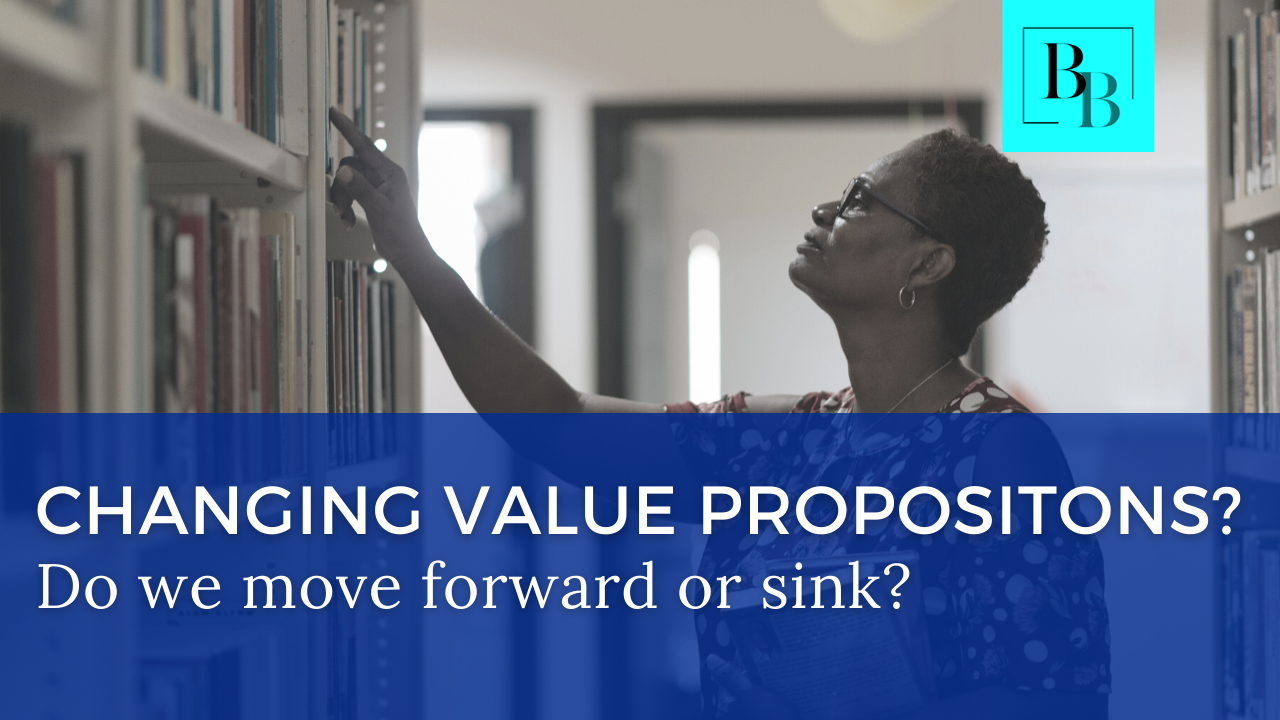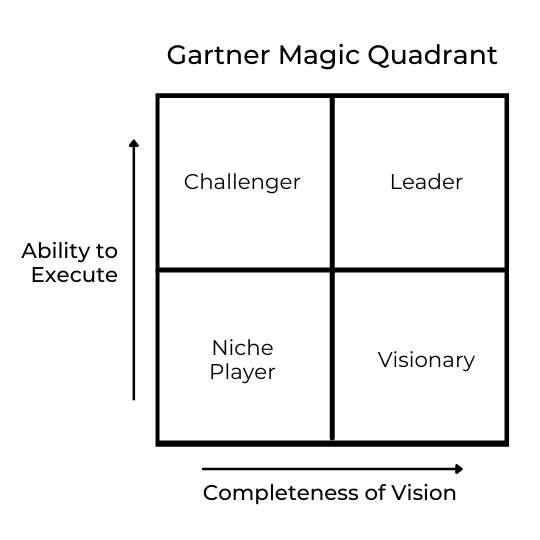Changing Value Propositions? Do We Move Forward or Sink?
Mar 28, 2022
By Guest Blogger Scott Hargrove, Chief Executive Officer, Fraser Valley Regional Library, Abbotsford, British Columbia
Not-for-profit organizations face a challenging proposition.
Our business goals exist to make effective contributions in our sector of interest to serve motivations other than profit. These motivations are often, but not always, aligned with a social cause of some sort, such as homelessness or the environment, and intended to provide high-quality services at a lower cost, rather than focusing on the profit margin.
But how do you assess the effectiveness of a non-profit in a given sector, particularly in the face of for-profit competition? How do you ensure that your organizational goals are clearly articulated and understood by staff and customer alike, and all resources are focused on the appropriate strategies to achieve those goals more effectively than the competition?
By way of example -- Thirty years ago, public libraries were the dominant player in the information industry, with limited competition including the media, professional analytical firms and institutions of higher learning. For the average citizen, the library was the first and only choice to meet information needs. To say that the growth of the Internet and the knowledge economy has changed the situation is a drastic understatement.
For the first time, libraries faced strong competition in traditional core service areas – including lifelong learning, community programming, and access to both content and information, to name a few.
It could be argued that the competition is doing a better job, at a lower cost. Given the environment of fiscal restraint in which we currently live, is it any wonder that funders, communities, and the profession itself are looking at the relevance of library services with a sharply critical eye?
How Does Your Not-for-Profit Rate?
Gartner Inc. justifiably bills itself as “the world's leading information technology research and advisory company”. They are quoted in the media almost every day for their analytical expertise in tracking and predicting the vagaries of the technology marketplace, and the relative dominance of the companies that are at the leading edge of the knowledge economy.
One of the many tools they employ is the Gartner Magic Quadrants model.
In a nutshell, the model is a simple square representing the axes of a line chart: 
An industry player is rated on both the completeness of the vision and the ability to execute the business.
The intersection of these two qualities indicates in which of four categories the business falls:
- Niche Player: An organization that can be relied upon to serve a small market segment, or which is unfocused and unable to present strong competition
- Challenger: An organization with a solid track record and dominant position within a market, but without a clear understanding of current market direction and focus
- Visionary: An organization with a clear understanding of where their market is going, but which have not demonstrated the ability to execute that vision
- Leader: An organization which has a clear vision of where their market is going, and a clear, proven capability to execute that vision
Gartner uses an exhaustive array of data, including market analysis, historical economic success and potential for future profitability to determine where a given player sits within their industry.
Their analysis drives investments, corporate direction and the market itself. Many of their evaluation indicators are not available in the social sector, itself an indication of our difficulty in properly assessing the value of our services.
The libraries of 30 years ago were unquestionably in the Leader Quadrant of the information industry. Now, most library leaders would likely place the library profession in the Challenger Quadrant, or perhaps in the Niche Player Quadrant. 
Our vision and strategies moving forward are unclear, and while our ability to execute our business is historically excellent, we are not currently as fiscally efficient as many of our competitors at providing our core services.
Google’s “good enough” approach appears to have won over many of our customers in information services, and Parks and Recreation departments are able to offer story time programming at significantly less cost than libraries.
Meanwhile, we cling to practices and values which have become obsolete, such as the reference interview and customer privacy, while our customers increasingly choose competitors that provide a better value proposition for the services they want.
The risk to libraries is clear, and this same threat exists for many not-for-profits, especially those set up to address social issues.
For those that are chasing increasingly rare, more restrictive government grants to address housing issues, for example, how can you assess and communicate your effectiveness over other not-for-profits, or against the more traditional development industry building low-cost housing options into broader urban renewal projects?
In today’s competitive marketplace, it is not enough to communicate a social justice-focused campaign tugging insistently at the heartstrings. Funders expect a coherent, strategic plan of action based on a well-articulated vision with specific deliverables, milestones and measurements to demonstrate success.
Does your not-for-profit have a coherent, strategic plan of action?
The Gartner Magic Quadrants model can be a valuable tool to help any organization refine its goals, and build a better business case to support its value proposition.
So - how must your value proposition change?
What are your main “pain points” dealing with your value proposition?
What advice would be most helpful to you? And we always assume that you are asking for a friend!
Get in touch. We’ll address your questions and concerns in an upcoming blog post.
Online Training Available Now
The Board Leader Academy:
A step-by-step guide to higher performance and impact.
Our spotlight course is designed for CEOs/Executive Directors, Board Chairs, and those who are interested in leadership positions on not-for-profit, for-impact boards.
Six weeks. Three brief video lessons with handouts per week (watch at your convenience) plus additional downloadable resources. 30-day money-back guarantee.
The Board Member 101:
Your accelerated path to competence and confidence.
In this one-month course, you will move from feeling reticent and tentative to competent and confident, asking good questions and making great contributions.
The course complements and reinforces your on-site orientation and opens new channels of communication and discussion.
Four weeks. Two brief video lessons (watch at your convenience) per week plus downloadable handouts. 30-day money-back guarantee.
P.S. May I ask a tiny favour?
Would you mind sharing this blog with one person? I would love it. You can get more of our thoughts on Facebook and LinkedIn. Join our Facebook Group for Executive Directors and Board members: Governance as Leadership



